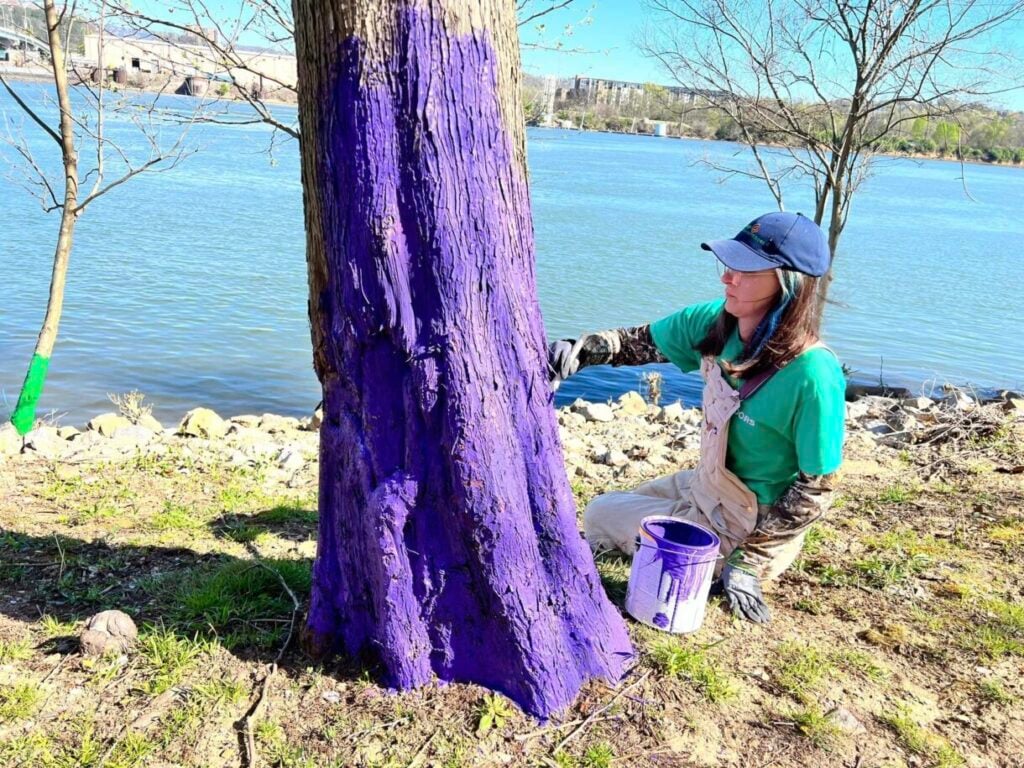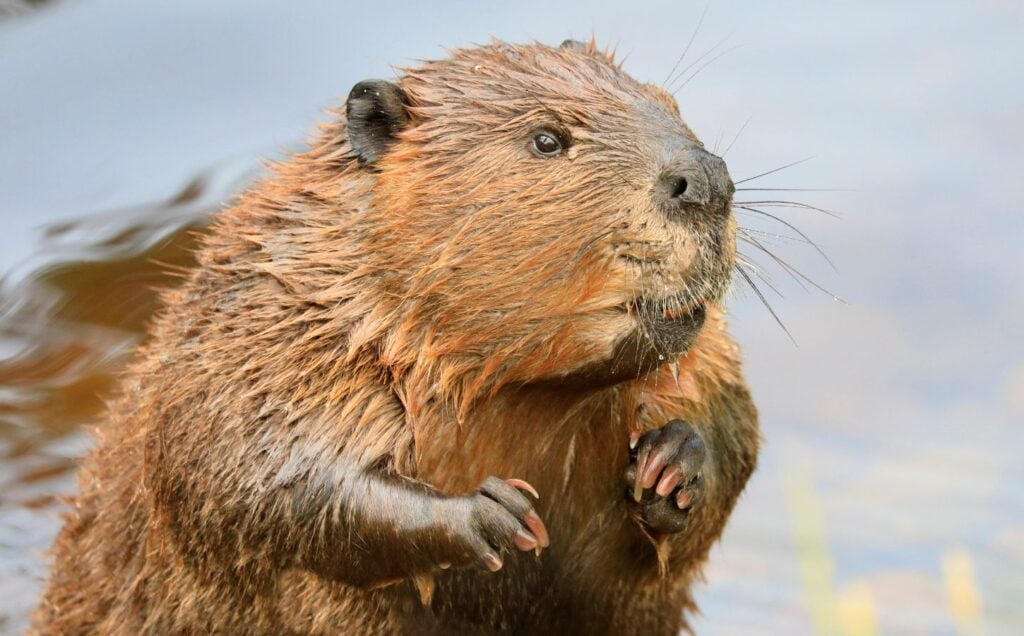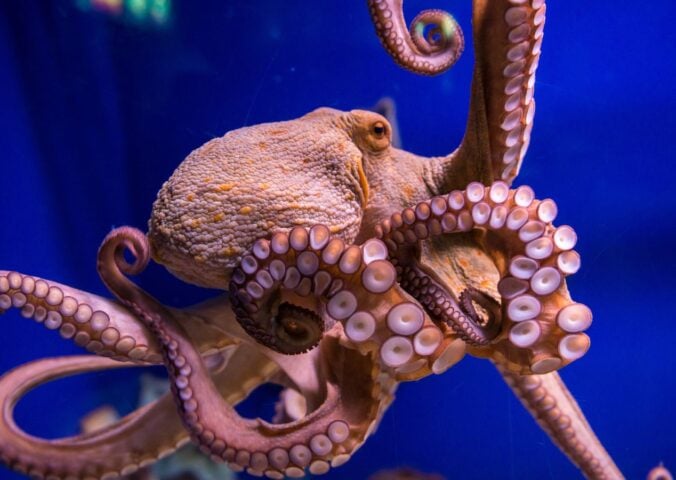Trees in Tennessee’s Chattanooga city are being painted with non-toxic paint in a bid to prevent unnecessary beaver deaths in the US.
The bottom of the trunks are being painted in bright colors. The move came about after the city’s Parks and Outdoors department consulted the Humane Society of the United States (HSUS). The latter provided advice for a non-lethal solution to the problem of beavers destroying riverfront trees to make dams.
Despite being a natural activity for the species, beavers’ chewing can leave tree trunks significantly weakened. Specifically, in Chattanooga, trees have the potential to fall into a nearby children’s playground or across a pedestrian footpath.
Traditionally, animals are killed in the US to prevent such risks. Moreover, in Tennessee, state law prevents beavers from being trapped and humanely released. They must be euthanized once caught.

Deterring the beavers
Chattanooga’s Parks and Outdoors department claims to have tried a number of preventative tactics before turning to painted tree trunks. These included protective fences – which the beavers climbed – and dousing trunks in hot sauce, which washed off in the rain.
So far, the most successful approach has been the use of non-toxic latex paint mixed with water and sand. The sand acts as an irritant to the beavers’ sensitive teeth, causing them to go looking for wood elsewhere. It is noted that painted trees have displayed light bite marks but nothing more, leading to assumptions that the painting technique is working.
This year is the first that officials have noted repeated beaver activity. According to Brian Smith, the Chattanooga Parks and Outdoors communications and marketing director, it is unclear where the beavers are taking their wood hauls. However, when they source wood that does not pose a threat to human health, they are largely left alone. And, considered a vital part of the region’s biodiversity.
Putting an end to human-wildlife conflict
HSUS states that beavers are not the only animals killed to “manage” human-wildlife conflicts in the US. It highlights that many species labeled as nuisances are also “culled,” instead of encouraged to carry out their natural activities away from human populations.
Raccoons, skunks, chipmunks, and even bears are specifically named by HSUS as species threatened by such extreme measures. The nonprofit subsequently calls for a change in tack, as killing animals “only addresses the symptom of the problem, not the cause.” As such, the issue is likely to recur.
The Wild Neighbors program sees HSUS working with local agencies across the US. These include animal shelters, law enforcement, wildlife agencies, and more. In total more than 630 are signed up to the initiative that produces and promotes educational resources about how humans and non-human animals can coexist, without choosing lethal action.
HSUS reports that since 2020, it has trained more than 7,000 animal care and control experts to use non-lethal resolution techniques when dealing with wildlife.






